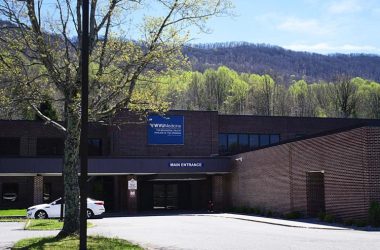BECKLEY, W.Va. — A day that dawned with severe thunderstorms and torrential downpours and ended in tragedy, June 23 undoubtedly will go into the Mountain State’s history books as the day of the thousand-year flood.
Southern West Virginia’s hardest hit area, Greenbrier County, saw 11 inches of rain fall in less than 12 hours that Thursday, according to Emergency Management director Al Whitaker.
Affecting 44 of the state’s 55 counties, the downpour caused flash flooding of small streams through neighborhoods that had never before seen a flood. In many places, that water drained into nearby rivers; the Greenbrier, Meadow, Elk, Gauley, Cherry and New all peaked above flood stage.
Swept away in the floodwaters were roads and bridges, parks and schools, homes and businesses and, most dear, 23 lives — 15 in Greenbrier alone.
In her almost 60 years living in White Sulphur Springs, City Council member Audrey VanBuren said she had never seen anything close to the destruction wrought by the June storm.
Speaking on Saturday, two days after the flood, she said, “White Sulphur Springs has lost many homes, but most of all so many lives have been lost. Children have been lost. I starting crying Friday, and every time someone comes up to me and says something nice, I start crying again.”
Reporting to council on July 13, WSS Fire Chief Brian Dolin said bluntly, “The city of White Sulphur was drowned.”
But Dolin and many others directly affected by the flood acknowledged that it could have been much worse, if not for neighbors looking out for neighbors.
Rainelle Mayor Andy Pendleton offered a chilling recollection of the floodwaters rushing through her town.
“I called the Fire Department to take the boat and get people out of their houses,” she said. “A lot of people hadn’t left their houses when the water started rising; they stayed in attics or up on their roofs. I could hear them screaming.”
Fire companies and rescue workers from all around the region — most of them volunteers — hastened to answer the call, putting their own lives on the line to save others.
“It was like nothing we’d ever seen,” said Lewisburg Fire Chief Joseph Thomas, describing the nightmarish scene that greeted him and fellow firefighters who had been dispatched to White Sulphur. He said they were stunned to see “people standing on top of their roofs, waving their arms to be rescued.”
As floodwaters receded, disaster-stricken communities from Richwood to Rainelle and from Elkview to Alderson began to fill up with donated supplies and relief volunteers who poured into West Virginia to lend a helping hand.
Federal and state agencies also stepped up to the plate, as FEMA and the SBA led a veritable alphabet soup of bureaus into the region to assess damage and take applications for aid. Gov. Earl Ray Tomblin toured the devastated towns and then established a new public-private relief fund, dubbed RISE, to provide grants to flood-damaged businesses as an incentive for them to remain in their communities and rebuild.
Homes for White Sulphur Springs — an offshoot of the post-flood charitable organization Homes for West Virginia — began operations with a goal similar to RISE’s, but with the focus on constructing a new neighborhood to encourage those rendered homeless by the disaster to remain in the Spa City.
Families have already started moving into the new dwellings built by Homes for White Sulphur Springs in the Hope Village development springing up along Big Draft Road and into houses being constructed in Rainelle in a separate endeavor led by the Tennessee-based Christian ministry Appalachia Service Project (ASP), which is living up to a two-year commitment to rebuild the tiny western Greenbrier town.
Keeping families and businesses in towns isn’t just a matter of sentimentality — although that is a factor. A loss of population and commerce can erode tax bases and municipal utility revenue streams to such a degree that towns simply can’t survive.
Outgoing Greenbrier County Assessor Michael Burke warned in late September that it could take as long as four or five years for the tax base to re-stabilize, given the level of property damage in municipalities like White Sulphur Springs and Rainelle.
Mayor Pendleton certainly understands the stakes of the ASP-led homebuilding that is now under way in her town. In an October interview, she said her goal is ensuring that those who want to remain in Rainelle can do so.
“We’re trying to keep people in our town,” she said. “Build them a home to bring them home.”
— Email: [email protected]




